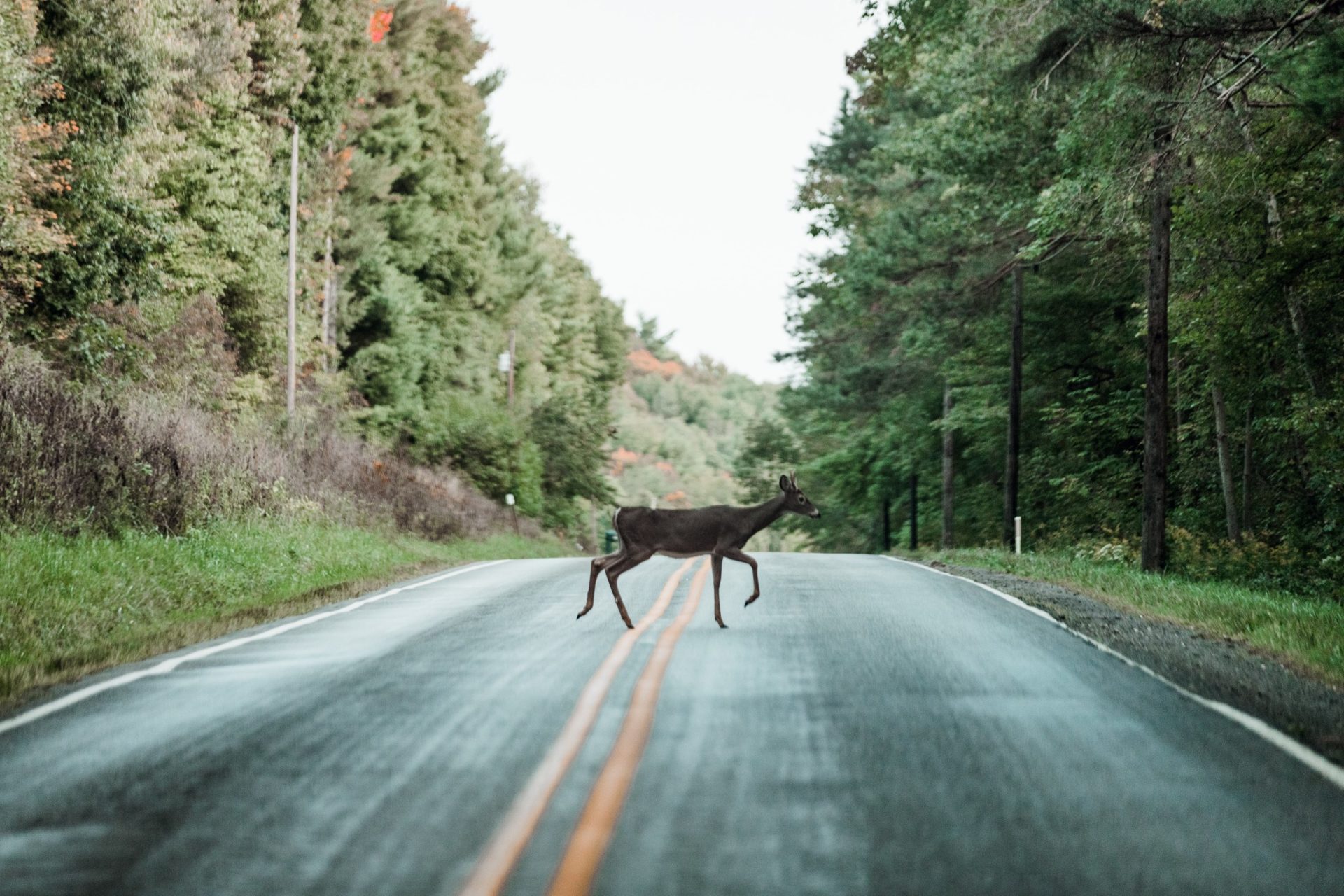
Photo by Donnie Rosie | Unsplash
The Infrastructure Investment and Jobs Act of 2021, passed by Congress and signed into law earlier this month by President Joe Biden, means more than relief from potholes, congestion, and highways and bridges that are in desperate need of repair. Yes, the $1.2 trillion investment in transportation and infrastructure aims to get us around faster, safer, and more smoothly, while also upgrading our nation’s waterworks, broadband capacity, and more. But in addition to improvements that you would expect in an infrastructure bill, the 1,000-page tome funds a new program that will build new bridges and underpasses… for animals.
Throughout the country, vehicle collisions with deer, elk, and other animals are a serious problem. These accidents injure or kill tens of thousands of people each year. And the total cost—including vehicle damage and insurance—can exceed $8 billion annually. In rural areas, hitting a deer is almost commonplace. In its latest analysis, the insurance company State Farm reports that in West Virginia, for example, one in every 37 people were likely to collide with a large animal.
Although drivers certainly pay a high price for collisions with wildlife, the animals fare poorly, too. A conservative estimate puts at more than 1 million the number of large animals that die on our roads each year. In Colorado, for example, vehicle collisions kill as many deer as state-regulated hunting activities (about 2% each of the total deer population). And crisscrossing wildlife habitat with roads does more than increase the likelihood of collisions: if animals can’t migrate or otherwise move throughout their range because roads impede their path, their populations become smaller and isolated—and thus more susceptible to becoming endangered or extinct. In fact, here in the U.S. and globally, habitat loss and fragmentation caused by roads are the leading causes of biodiversity decline.
Over the past decade or so, wildlife and transportation researchers have developed ways to pinpoint areas along our nation’s roads where wildlife tend to cross—or try to cross—year after year. These are places where millions of deer, elk, pronghorn, and other herds make seasonal migrations between their cooler, higher-elevation summer range, and their lower, warmer winter range. In many cases, they use the same migration pathways each year, so it’s no surprise that these are places where vehicle collisions often occur.
Historically, transportation officials have had few tools to address this issue beyond erecting signs that alert drivers to the potential for animals on the road, which has done little to reduce the number or frequency of crashes. But now, there’s some good news: With the passage of the infrastructure bill, a wider range of solutions—and a corresponding investment to implement them—will be available for the first time.
The wildlife and transportation component of the new infrastructure law was originally drafted by a Senate committee that worked on the road, bridge, and water parts of the bill, led by Senator John Barrasso (R-WY), whose constituents from Wyoming are well aware of the dangers posed when vehicles and wildlife collide. When the Senate majority changed hands last year and Senator Tom Carper (D-DE) took on leadership for pushing the transportation bill over the finish line, he worked closely with Senator Shelley Moore Capito (R-WV), the committee’s ranking member, to find bipartisan solutions.
The strategic infrastructure funded under the Act’s new wildlife crossing safety program will include far more than just roadway signs. It dedicates $350 million over five years to municipalities, states, and tribes for the construction of bridges, tunnels, culverts, fencing, and other infrastructure that will allow wildlife safe passage either under or over roads. Such projects, which some states are already implementing, have proved to reduce wildlife-vehicle collisions, thus lowering the number of human injuries and deaths and improving the health of wildlife populations. In some regions, the crossings have reduced collisions by more than 90%.
Because of the effectiveness of wildlife crossings, Congress isn’t the only part of government that’s beginning to develop policy and funding programs for these structures. Governors in red and blue states alike, including Colorado, Nevada, Wyoming, and Florida, have recently launched major initiatives focused on providing safe passage for wildlife and drivers. State legislatures are getting in on the action, too, with laws passed in New Mexico, Oregon, Virginia, and California that provide resources and policy direction for migration corridor issues.
With safer roads and less roadkill, safe passage structures end up paying for themselves by helping prevent costly accidents. A new tool being developed by the University of California, Davis, in collaboration with The Pew Charitable Trusts, will help transportation planners and decision-makers understand how much potential projects may cost and, based on previous collision data, how long before they would see a return on the initial investment.
Once the U.S. Department of Transportation develops guidelines for the new infrastructure grant program, deserving projects will be getting underway. The result should be safer roads, healthier populations of wildlife, and monetary savings for drivers who would prefer to share the road only with other drivers—and avoid colliding with deer and other species. Who can argue with that?

Matt Skroch
Matt Skroch oversees The Pew Charitable Trusts’ work on wildlife migration corridors and crossings.






